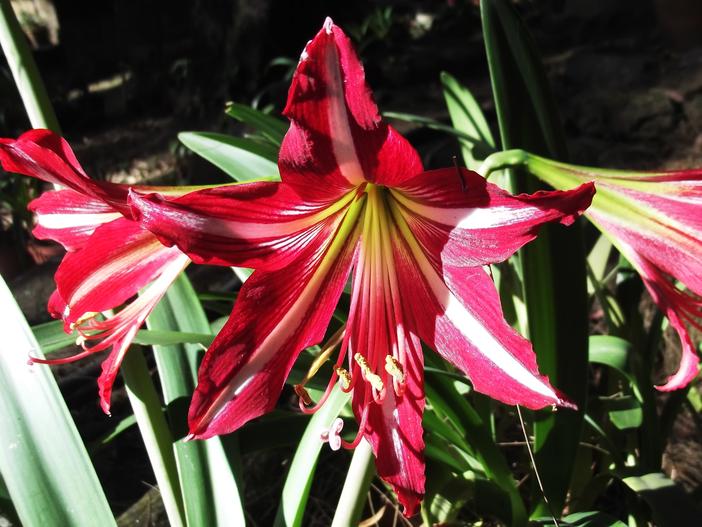Parrot Amaryllis
(Hippeastrum psittacinum)
Parrot Amaryllis (Hippeastrum psittacinum)
/
/

Yercaud-elango
CC BY-SA 4.0
Image By:
Yercaud-elango
Recorded By:
Copyright:
CC BY-SA 4.0
Copyright Notice:
Photo by: Yercaud-elango | License Type: CC BY-SA 4.0 | License URL: https://creativecommons.org/licenses/by-sa/4.0 | Uploader: Yercaud-elango | Publisher: Wikipedia Commons






Estimated Native Range
Summary
Hippeastrum psittacinum, commonly known as Parrot Amaryllis, is an evergreen perennial bulb native to the open woodlands and savannas of Eastern Brazil. It typically grows to a height of 2 feet (0.6 meters) and a width of 3 feet (0.9 meters). The plant features strap-shaped, glossy green leaves and is particularly noted for its striking trumpet-shaped flowers, which exhibit a unique combination of green, red, and white hues. These blooms are quite showy and appear primarily during the fall, winter, and spring seasons, adding vibrant color to gardens during times when few other plants are in flower.
Parrot Amaryllis is valued for its exotic-looking flowers and ability to bloom under a variety of light conditions, from full sun to part shade. It is often used in ornamental plantings, borders, and as a container plant due to its moderate size and attractive foliage. While it prefers soils with medium drainage, it is relatively drought-tolerant once established, requiring low amounts of water. However, it is sensitive to frost and needs protection in cooler climates. In regions where it is not hardy, bulbs can be lifted and stored over winter or grown as houseplants. Potential problems include bulb rot if overwatered and pests such as aphids and spider mites.CC BY-SA 4.0
Parrot Amaryllis is valued for its exotic-looking flowers and ability to bloom under a variety of light conditions, from full sun to part shade. It is often used in ornamental plantings, borders, and as a container plant due to its moderate size and attractive foliage. While it prefers soils with medium drainage, it is relatively drought-tolerant once established, requiring low amounts of water. However, it is sensitive to frost and needs protection in cooler climates. In regions where it is not hardy, bulbs can be lifted and stored over winter or grown as houseplants. Potential problems include bulb rot if overwatered and pests such as aphids and spider mites.CC BY-SA 4.0
Plant Description
- Plant Type: Bulb
- Height: 1.5-2 feet
- Width: 2-3 feet
- Growth Rate: Moderate
- Flower Color: Green, Red, White
- Flowering Season: Fall, Winter, Spring
- Leaf Retention: Evergreen
Growth Requirements
- Sun: Full Sun, Part Shade
- Water: Low
- Drainage: Medium
Common Uses
Drought Tolerant, Low Maintenance, Showy Flowers
Natural Habitat
Native to the open woodlands and savannas of Eastern Brazil
Other Names
Common Names: Papagojamaryllis
Scientific Names: , Hippeastrum psittacinum, Amaryllis illustris, Amaryllis psittacina, Hippeastrum illustre, Amaryllis psittacina var. decorata, Aschamia psittacina, Aschamia psittacina publ, Hippeastrum decoratum, Leopoldia illustris
GBIF Accepted Name: Hippeastrum psittacinum (Ker Gawl.) Herb.